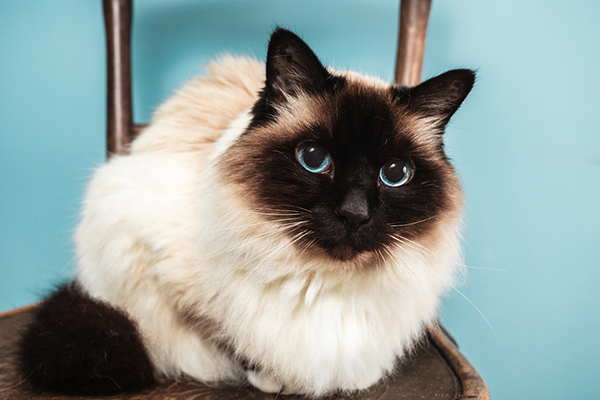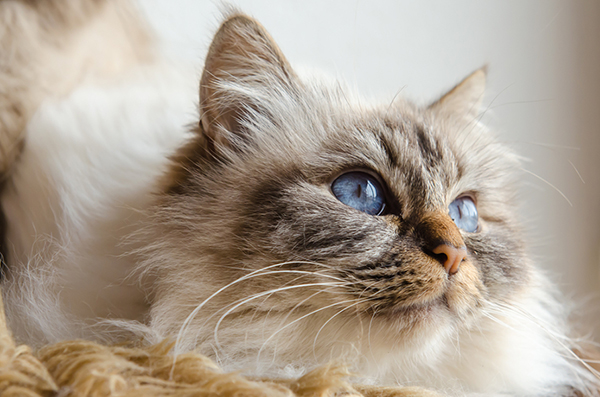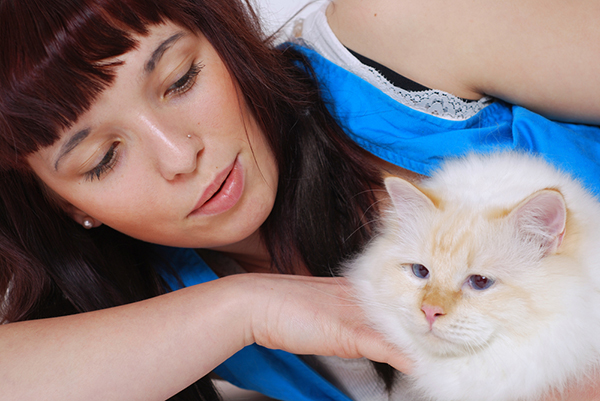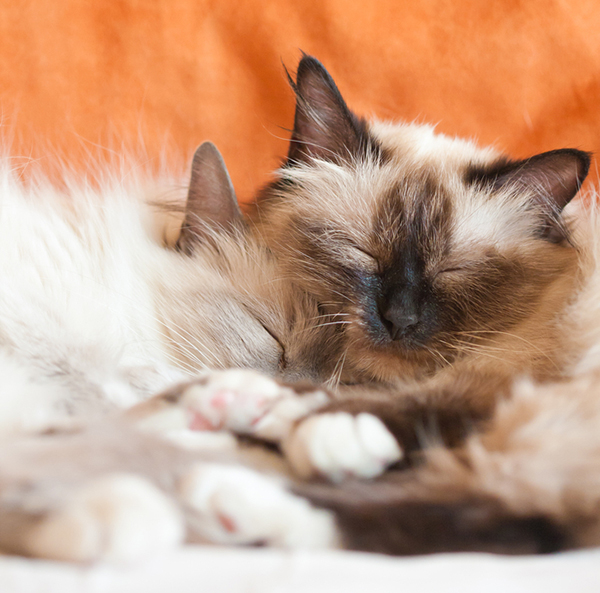Very few cats have epic tales about how they came to exist, but the Birman has always been a standout. Supposedly the breed got its distinctive coloration through the blessing of the golden goddess Tsun-Kyan-Kse. A white cat belonging to a Khmer monk who worshipped the goddess gave his master peace as he died. Afterwards, the cat’s white fur turned golden, and his yellow eyes became sapphire blue. While the cat’s legs turned brown, his paws remained white as a symbol of purity. All the other cats in the temple also took on this coloration. The Birman looks like this:

Origins
The truth of the Birman’s origin, although intriguing, is a good deal more mundane than the legend. The first Birmans were registered and shown in France in the 1920s. The breed was almost decimated by World War II: When peace was finally declared, there were only two Birmans left alive in Europe. Those two cats were heavily outcrossed with Persians and Siamese in order to rebuild the breed.
Birmans were imported into the U.S. in the 1960s, and the breed was recognized by the Cat Fanciers’ Association (CFA) in 1967. The International Cat Association followed suit in 1979. Now this once-rare breed is No. 9 in popularity in CFA registrations.

Appearance
The Birman is a longhaired color-pointed cat with deep blue eyes and white boots and mittens. It is an average-sized cat, with males weighing between 8 and 12 pounds and females a little bit smaller. Birmans have long but sturdy bodies, and although they are distantly related to Siamese and other Oriental breeds, the Birman’s body type is not nearly as extreme. Like many Oriental breeds, Birmans come in a variety of color points, including tabby points.
The Birman may be mistaken for a Himalayan, but there are two distinct differences between the breeds: The Himalayan has a flat face while the Birman has a more traditionally feline nose, and the Birman’s silky fur is a single coat, so Birmans are much less likely to get mats than Persians and Himmies.

Health and longevity
Like many Oriental breeds, Birmans are known to live 15 years or more. The only condition the Birman may have a predisposition to develop is hypertrophic cardiomyopathy, a heart disease that causes thickening of the walls of the heart and can lead to formation of blood clots and other complications.
That said, the Birman has one of the lowest rates of genetic diversity in the cat fancy, so if you’re interested in a Birman, be sure to keep up with any findings about the breed’s health issues and buy your Birman from a responsible breeder rather than from a pet store or backyard breeder.

What it’s like to live with a Birman
Your Birman is a calm, affectionate, and outgoing kitty who may distinguish herself by being patient and friendly with children. She loves a good game of chase or a session with her favorite interactive toy, but she’ll also be happy to hang out with you while you read a book or “help” you make the bed or check your email. Her voice is relatively quiet, and she doesn’t use it unless you need to hear a little chirp as a reminder that it’s time to pet her or give her some supper.
Your Birman won’t do well as an only pet; she needs a furry friend to keep her company while you’re away so she doesn’t get bored and lonely. Since Birmans typically get along with other cats and even dogs, you shouldn’t have much trouble finding her a pal.

Birman trivia bits
- The Birman’s original name, as given by a French cat registry, was Sacre de Birmanie, which, roughly translated, means “sacred cat of Burma.”
- One story of how Birmans got to Europe is that a member of the early-20th-century transportation baron family known as the Vanderbilts smuggled a pair of them out of Burma.
- Birman kittens are usually assigned names that start with the same letter, and each year that letter changes. The letter for 2015 is L, so you might find Birmans born this year with names like Laura, Louise, Larry, Liam, and Lloyd. Next year’s kittens will have names beginning with M.

Do you have a Birman in your home? What’s it like to live with her? Please share your thoughts and photos of your Birman in the comments!
Read other breed profiles on Catster:
- Get to Know the Turkish Angora: The Ballerina of the Cat Fancy
- Get to Know the Russian Blue: A Study in Quiet Elegance
- Get to Know the British Shorthair: A Purring Teddy Bear
- Get to Know the Scottish Fold: An Owl In a Cat Suit
- Get to Know the Cornish Rex: A Pack of Personality in a Ballet Dancer’s Body
- Get to Know the Australian Mist: The House Leopard From Down Under
- Get to Know the Scottish Wildcat: The Highland Spirit Incarnate
- Get to Know the American Curl: The Peter Pan of Cats







